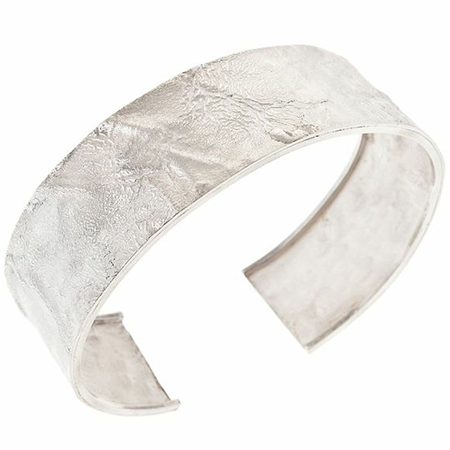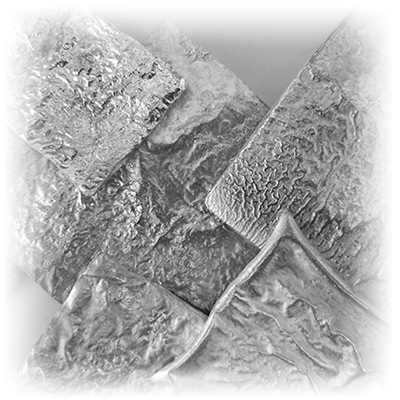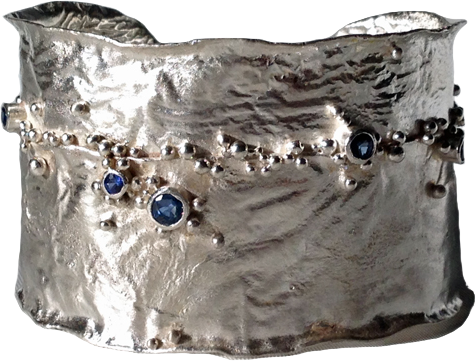RETICULATION
What is RETICULATION?
Reticulation is a technique that appears to bend the laws of physics upon first glance. When you see and touch a reticulated piece of jewellery, you will be wondering for yourself just how in the world we were able to make such a design possible. Like all of our jewellery-making techniques, reticulation is one that will always only produce a one-of-a-kind piece, even if you were to incorporate it into a design template. This is due to the fact that when reticulation stock is being produced, nature is creating the pattern with only some assistance from the human hand. A person may guide the torch, but that is the extent of human control. The pattern that the stock will take is not dictated by its creator, but rather allowed to take form under the creator's watchful eye. The end result is a sheet of silver that looks as if it has been frozen in time while molten under intense heat, yet remains cool to the touch while appearing otherwise.

How is RETICULATION made?
The process of creating reticulation stock for the purpose of jewellery-making is one that is tedious, yet simultaneously fun and satisfying. The enjoyment to be had resides in the mystery of the pattern that will emerge after the process is complete. Due to the fact that no two patterns will ever be identical, every piece of jewellery made with this technique will always be one-of-a-kind. The process starts out with a specially-created silver alloy that requires a very specific concentration of fine silver and copper. This alloy is then rolled out into thin sheet no thicker than 1mm. The sheet is then repeatedly heated, quenched and brushed until an ideal layer amount of fine silver is raised to the surface which encompasses the alloy material within. The idea behind this is that the inner alloy material has a lower melting temperature than the outer fine silver layer. When it comes time to create the pattern, the sheet is heated to the melting point of the inner silver alloy, while the outer fine silver layer remains intact and holds the molten alloy together as the fine silver has not reached melting temperature, acting as a bag of sorts. When agitated by the pressure of the torch and then left to cool, the result is a hard sheet of silver with an appearance of flowing, molten metal.


Best uses for RETICULATION
The defining feature of a reticulated piece is, of course, the reticulated texture. Therefore, from a design perspective, this feature should be highlighted. This is usually done by creating large pieces of reticulation jewellery to show off the maximum effect, typically cuff bracelets and large necklaces or pendants. In most cases, the texture is enough of a design element and thus would be left as is. However, accentuating the piece can also be a good idea. One of the most aesthetically pleasing methods of doing this involves incorporating finely finished and high-polished gold elements to the piece, brilliantly contrasting with the rustic and satin-finish of the reticulated silver. Alternatively, or even in tandem, the use of gemstones can bolster the appeal of a piece of reticulation jewellery. It is even entirely possible to create reticulated gold jewellery and adding silver-tone materials such as white gold, palladium, or even silver itself, for an inverted contrast. Whatever the design may be, the key is "contrast."
